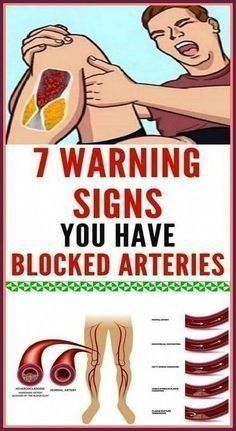Blocked arteries, also known as atherosclerosis, occur when plaque builds up inside the arteries, restricting blood flow to vital organs such as the heart, brain, and limbs. Recognizing the warning signs of blocked arteries is crucial for early detection and intervention to prevent serious complications such as heart attack, stroke, or peripheral artery disease. Here are seven warning signs to be aware of:
1. Chest Pain or Discomfort (Angina):
One of the most common symptoms of blocked arteries is angina, which is characterized by chest pain or discomfort. This pain may feel like pressure, tightness, squeezing, or heaviness in the chest and may radiate to the arms, shoulders, neck, jaw, or back. Angina typically occurs during physical exertion or emotional stress when the heart muscle is not receiving enough oxygen-rich blood due to narrowed arteries.
2. Shortness of Breath:
Difficulty breathing or shortness of breath, especially with exertion, can be a warning sign of blocked arteries. As the arteries supplying blood to the heart become narrowed, the heart may struggle to pump blood efficiently, leading to decreased oxygen delivery to the lungs and causing breathlessness.
3. Fatigue and Weakness:
Persistent fatigue and weakness, even with adequate rest, may indicate blocked arteries. Reduced blood flow to the muscles and organs can lead to decreased energy levels and feelings of tiredness. Individuals may experience fatigue during physical activity or as a constant, lingering sensation.
4. Leg Pain or Numbness (Peripheral Artery Disease):
Blocked arteries in the legs, known as peripheral artery disease (PAD), can cause symptoms such as leg pain, cramping, numbness, or weakness, particularly during walking or exercise. This condition, also referred to as intermittent claudication, occurs due to reduced blood flow to the lower extremities.
5. Cold Hands or Feet:
Reduced blood flow to the extremities can cause coldness or numbness in the hands or feet, even in warm temperatures. This symptom, known as peripheral vascular disease, occurs when arteries in the arms or legs become blocked or narrowed, leading to poor circulation and decreased sensation.
6. Dizziness or Lightheadedness:
Insufficient blood flow to the brain due to blocked arteries can cause dizziness, lightheadedness, or fainting spells. These symptoms may occur suddenly or gradually and may be exacerbated by changes in posture, such as standing up quickly.
7. Erectile Dysfunction:
In men, erectile dysfunction (impotence) may be a warning sign of blocked arteries. Reduced blood flow to the pelvic organs can impair erectile function, making it difficult to achieve or maintain an erection. This symptom may occur before other signs of cardiovascular disease become apparent.
It’s important to note that individuals may experience one or more of these warning signs, and symptoms may vary depending on the location and severity of artery blockages. If you experience any of these symptoms, it’s essential to seek medical attention promptly for evaluation and appropriate management. Early detection and treatment of blocked arteries can help prevent complications and improve long-term cardiovascular health.



